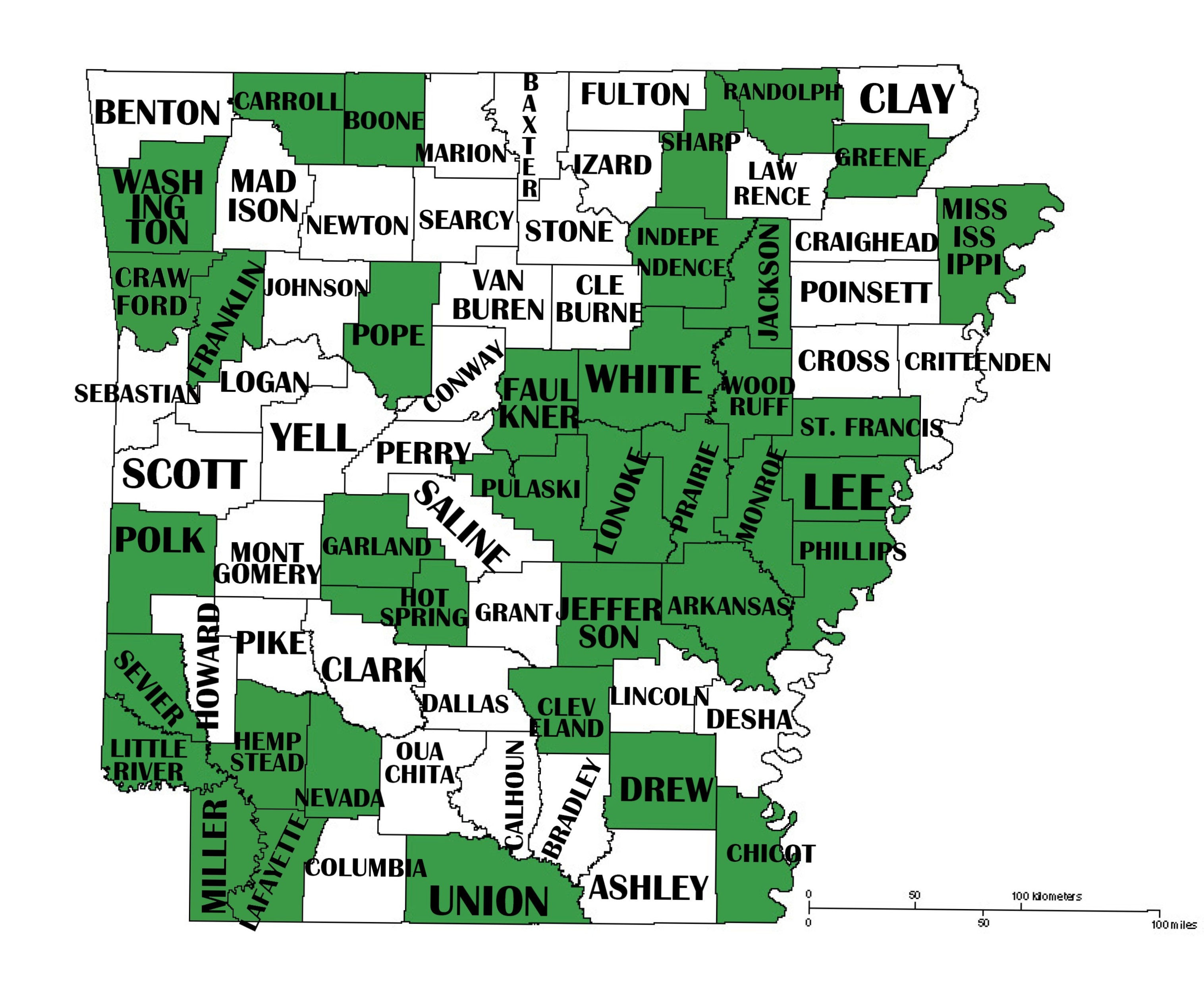Chronicling America Digitized Newspapers
Project Timeline
In 2017, ASA was awarded a two-year grant (2017-2019) to select, duplicate, and digitize historic Arkansas newspapers with a goal of producing 100,000 pages of content for the Chronicling America website. By the end of the first cycle, ASA had digitized 100,630 pages from 40 newspaper titles representing 15 counties in the state.
In 2019, ASA was once again awarded a second two-year grant (2019-2021) which added an additional 20 newspaper titles representing 13 Arkansas counties for a total of 199,299 pages added to the Chronicling America website.
In 2021, ASA was awarded a third grant (2021-2023) to fund an additional 100,000 pages of content. The emphasis on newspaper title selection for this cycle is focused on underrepresented communities including female-owned and operated papers, minority-owned papers, and foreign language papers.
In August, 2023 ASA was awarded funding for an additional cycle of the grant. This cycle will begin on September 1, 2023 and end August 31, 2025. In this cycle the team will focus on newspaper titles that demonstrate the evolving relationship between the economy and the environment, from Arkansas's territorial period from 1819 to the mid-1930s.
Some of the Arkansas titles added to Chronicling America include Woman's Chronicle, Arkansas Ladies' Journal, Little Rock Ladies' Journal, Rural and Workman and "Ladies Little Rock Journal", Southern Ladies' Journal, Arkansas State Press, Arkansas Echo, Stuttgart Germania and the De Queen Bee.
The Team
The ADNP team is made up of seven ASA archivists and microfilm technicians, with two staff members being dedicated to the project full-time. In addition to ASA staff, the digitization and duplication process is outsourced to a third party vendor. Additionally, ASA staff works with an advisory committee (listed below) to give guidance and expertise when selecting the titles to include in the project each cycle.
- Dr. Guy Lancaster, Editor for CALS Encyclopedia of Arkansas, Central Arkansas Library System. Dr. Lancaster earned his PH.D. in Heritage Studies from Arkansas State University and has taught and written about Arkansas history. Since 2005 he has edited the CALS Encyclopedia of Arkansas, a project of the Central Arkansas Library System.
- Dr. Kimberly Little, Lecturer, University of Central Arkansas. Dr. Little earned her bachelor’s degree with honors at Harvard and her M.A. and Ph.D. at the University of Wisconsin. Her academic focus is teaching, but her research interests lay primarily in environmental and urban history. She is a specialist of research methods and twentieth-century America. She teaches environmental history, research methods, and US surveys and has taught public history.
- Dr. Sharon Silzell, Associate Professor of History, University of Arkansas at Monticello. She earned her Ph.D. from the University of Texas in Austin in 2015. Dr. Silzell is the president of the Arkansas Association of College History Teachers (AACHT), the regional coordinator for National History Day in Southeast Arkansas, and co-faculty advisor for Phi Alpha Theta (an academic honors society for history students). Her affiliations demonstrate that she is familiar with history outreach and coordination, and she will be a valuable partner in spreading awareness of Chronicling America and its uses for history research.
- Dr. Jeannie Whayne, Professor of History, University of Arkansas. Dr. Whayne is a specialist in agricultural and southern history. Her research focuses on the lower Mississippi River Valley and the interplay of social and economic history with environmental change, agricultural development, and race relations.
- Joshua Youngblood, Instruction and Outreach Unit Head for the Special Collections Division in the University of Arkansas Libraries. Mr. Youngblood serves as the history and rare books librarian and the curator of the Arkansas Collection. Before joining Special Collections in 2011, he was a member of the Florida Memory Project of the State Archives of Florida, served as the information office of the Florida Division of Cultural Affairs and was a staff member of Florida Main Street in the Bureau of Historic Preservation. He has published on digital archival exhibiting and archival instruction programs, as well as on the history of Arkansas, lynching, and reform movements in the American South. A graduate of Florida State University, Youngblood is a certified archivist and a past president of the Society of Southwest Archivists.
If you are interested in learning more about this project or would like additional resources for using Chronicling America for your own personal research or research in the classroom, please contact us at [email protected].




